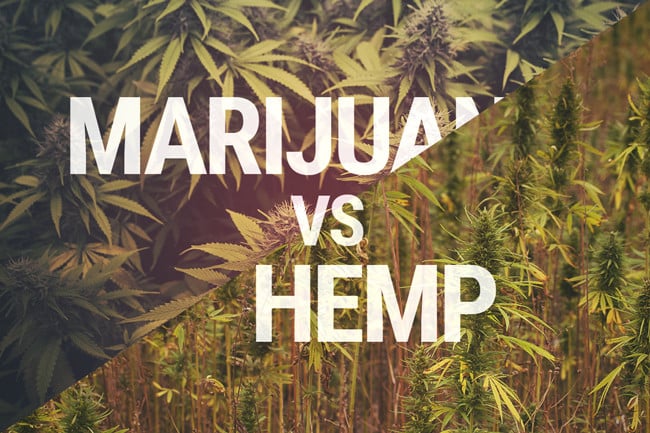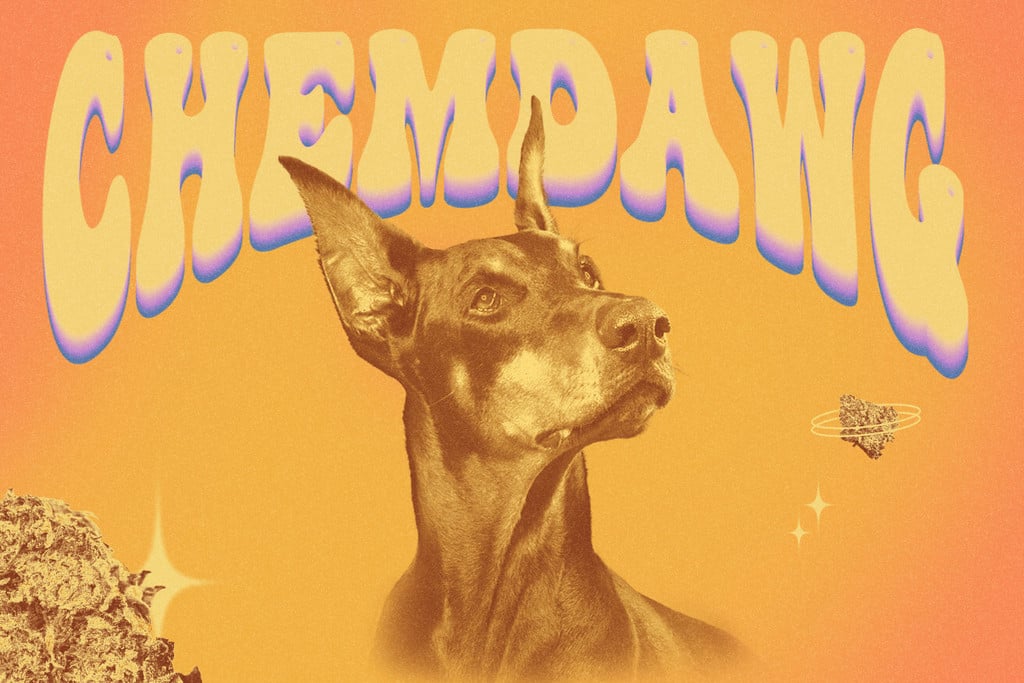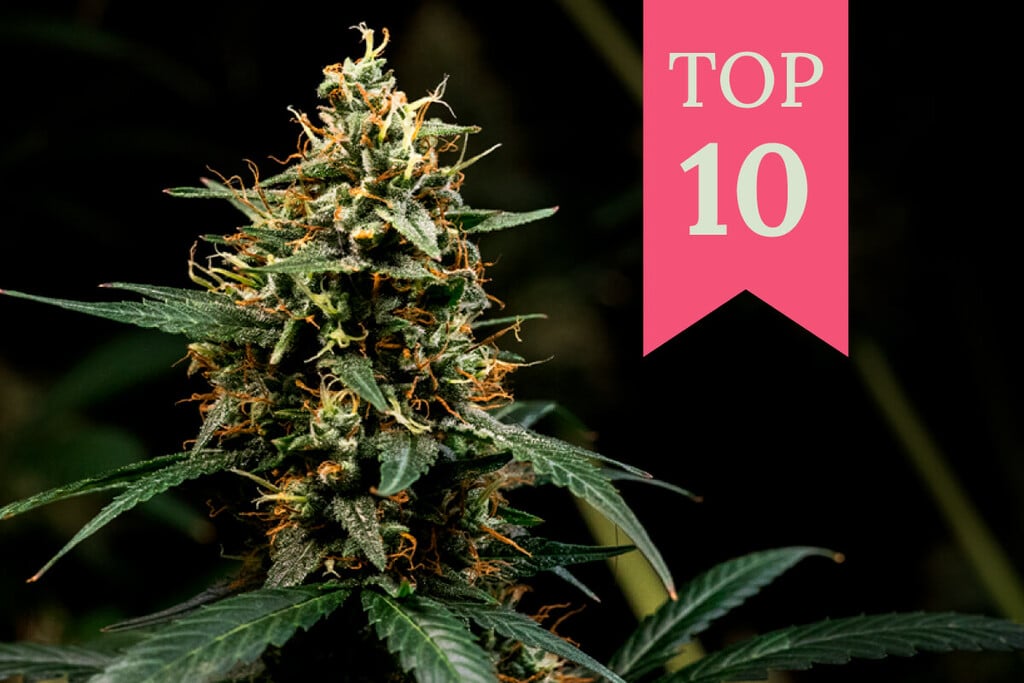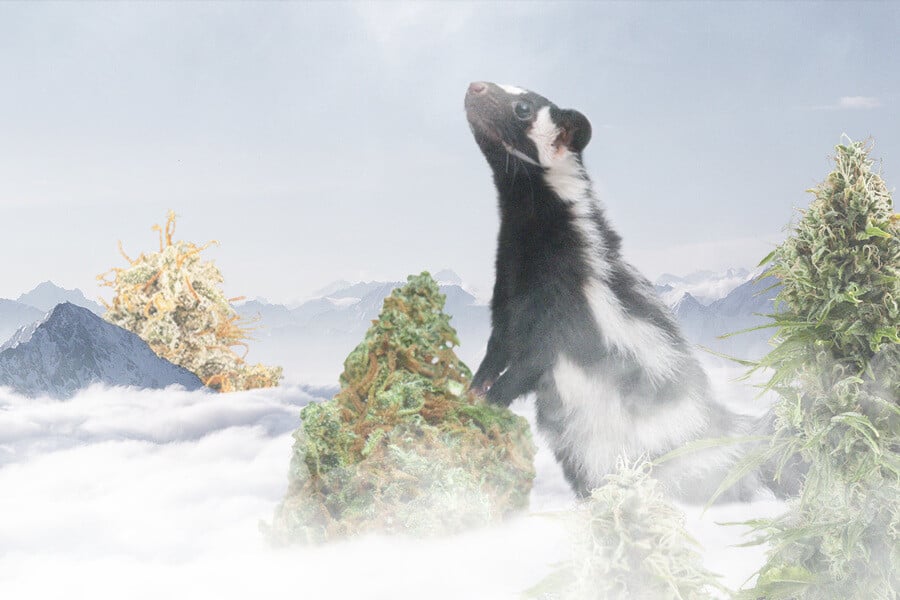.

The History of Cannabis
Cannabis has one of the most spectacular histories of any plant on Earth. Ancient cultures used the plant to craft ropes, sails, and paper. Their medical systems employed cannabis to treat ailments, and their religions used the herb to become closer to the divine, and even banish evil spirits. Discover the vast history of cannabis below.
Contents:
Today, millions of people use cannabis across the world. However, like many of the common fruits and vegetables that we enjoy, cannabis started out as a wild species confined to a small ecological area.
Since discovering cannabis, humans have spread the plant to all corners of the Earth and domesticated it. They have gone on to create hybrids and differing varieties, and used it to create medicines and industrial materials.
Starting out as just another wild plant species, cannabis quickly became one of the most versatile yet controversial herbs in human history. It served as a means of crafting ropes, sails, and paper. Royalty used it as a medicine to conquer pain. Religious believers harnessed its psychoactive properties to feel closer to the divine.
In the modern era, researchers have unveiled the chemical complexity of the herb. Breeders have created varieties that contain far higher quantities of cannabinoids and terpenes than their wild landrace ancestors. Currently, thousands of people are sitting behind bars simply for possessing the herb.
Cannabis has clearly had a significant impact on human culture over the last few thousand years. So let's discover precisely where cannabis comes from, how it spread across nations, and how the world sees this prevalent plant today.
The Botanical Origin Of Marijuana
You've likely experienced its effects hundreds of times, but how deeply do you really know cannabis?
As well as exploring the physiology and biology of different species, botanists carry out taxonomy to analise the characteristics of plants and categorise them into families. They also conduct palaeobotany—the study of plant fossils.
Both of these branches of botany help to establish the origins of particular species of plants. When it comes to marijuana, researchers have developed a detailed picture of the herb's family tree.
The official classification of cannabis occurred in relatively recent history. The Swedish botanist and zoologist Carl Linnaeus classified the herb as Cannabis sativa L (L stands for Linnaeus) in 1753. Linnaeus selected this title as it described the physical features of the plant. The word "cannabis" means "cane-like", whereas "sativa" means "planted or sown". At the time, he believed the genus contained only one species.
In 1875, the French naturalist and evolutionary biologist Jean-Baptiste de Lamarck challenged this view based on new plant specimens sourced from India. Lamarck named this new version of the plant Cannabis indica, and stated that it had poor fibre quality than sativa, but had a stronger psychoactive profile.
Over the following centuries, several botanists wrestled with separating cannabis into further subspecies. However, such minute differences created blurry lines that others disagreed with. In the 1970s, professors William Emboden, Loran Anderson, and Harvard botanist Richard E. Schultes settled on the key structural differences between three obvious subspecies: Sativa, indica, and ruderalis.
These three categories are widely recognised today. You'll come across these names during a brief browse of any seed bank. Each offers the grower something slightly different when it comes to size, yield, and growing speed.
Even more recently, during the 1980s, researchers placed cannabis into the cannabaceae family. This group contains 170 species, including hops, the terpene-filled cones that are used to flavour beer.
Where Does Marijuana Originally Come From?
Before we delve into the history of marijuana in different civilisations, we need to cover how the plant came to be in the first place. Currently, the exact geographical origins of marijuana remain contested. However, some convincing evidence points towards three key regions.
Central Asia
Through his historical study of cannabis, author R. J. Bouquet stated, in 1950, that marijuana originated in Central Asia[1]. He wrote that current-day Kazakhstan, Mongolia, Northwest China, and the Russian Far East could all form this potential point of origin.
India
Two other researchers agreed on a slightly different origin theory. While agreeing that Central Asia played a part as the home of cannabis, Hooker and Vavilov extended the boundaries to the genesis point of the herb.
Hooker observed wild cannabis growing among the southwestern Himalayan Mountains. Vavilov also felt that the plant possibly originated in Northwest India, including Punjab and Kashmir, as well as Afghanistan, Tajikistan and Uzbekistan.

Tibet
Despite these fairly accurate theories, more recent research has painted a much more reliable origin of marijuana. John McPartland—a legendary cannabis researcher from the UK—published a paper in the journal Vegetation History and Archaeobotany that places the home of cannabis high up on the Tibetan Plateau.
But what makes his conclusion stand out above the others? Well, he based it on a wealth of physical evidence.
Perched 3 kilometres above sea level, this elevated steppe might seem like an unlikely place for cannabis to emerge, but it's exactly where the data led McPartland and his research team.
They began by digging through piles of scientific studies to identify archaeological and geological sites where other scientists had previously found cannabis pollen. After working their way through the data, they found that the earliest occurrence of cannabis pollen took place in northern China and southern Russia.
They landed on the conclusion that cannabis likely originated near Qinghai Lake on the Tibetan Plateau, around 28 million years ago. At this point in history, cannabis probably sprang forth from a common ancestor shared with the hops plant.
From this location, cannabis naturally spread into Europe around 6 million years ago and into eastern China approximately 1.2 million years ago. Cannabis pollen finally occurred in India more recently, around 30,000 years ago.
The Ancient Historical Use Of Marijuana
Now you're familiar with the taxonomy and possible origins of marijuana. Next, we'll take a plunge into cannabis use through ancient history. Then, we'll take a look at how our relationship with the herb has changed in more recent times.
Czech Republic |
Czech Republic |
The region currently known as the Czech republic could be home to the oldest known use of cannabis[2] in human history. Fibre imprints on clay fragments found in the region are dated to around 26,000 - 24,000 years ago.
One of the world's leading experts of prehistoric fibre technology stated, "..the impressions were created from fabrics woven of fibres from wild plants, such as nettle or wild hemp [a fibrous and low-THC form of cannabis], that were preserved by accident". However, until further evidence emerges, the plant material that the ancients used to create these imprints remain speculation.
China |
China |
Because cannabis almost definitely originated in Central Asia and Tibet, it makes sense that the earliest verifiable record of human use of the plant comes from nearby regions. Archaeologists discovered the use of hemp fibres on the island of Taiwan, situated off the coast of China, 10,000 years ago during the Stone Age.
Here, people used hemp cords to decorate wet clay pots as the material dried. Adding to these findings, researchers found tools known to be involved in the processing of cannabis fibres.
-
Cannabis and Chinese industry
The ancient Chinese also elected to choose hemp as the plant to make their clothes. This tall and resourceful plant enabled them to end their dependence on animal skins.
Not only did they use hemp for their everyday garments, but the Book of Rites (written around 200 BC) instructed that people should wear clothes spun from hemp during periods of mourning.
Their industrious use of hemp didn't stop at mere articles of clothing. They used hemp to make ropes[3], nets for fishing, and paper to document their history, philosophy, and poems. Hemp appears in many important examples of Chinese literature between 475-221 BC, including philosophical works by Confucius and classical poetry.
A few centuries later in around 200 AD, the ancient Shuowen dictionary[4] put the Chinese knowledge about cannabis on display. This old tome documents how they knew of the female and male aspects of cannabis, suggesting they managed to identify these differences based on flower and pollen production.
-
Cannabis and Chinese medicine
Cannabis also played a fundamental part in the medical system of ancient China[5]. Documents point to the use of cannabis in Chinese medicine for around 1,800 years. These texts show that they used almost all parts of the plant in their preparations, including the seeds, leaves, roots, stalks, and flowers.
China also tapped into the psychoactive power of cannabis throughout its history. Taoism started to spread across the nation around 600 BC, a belief system that claims humans should strive to live in balance with nature and the universe. At first, it was deemed sinful to alter the consciousness with cannabis.
Later down the line, during the first century AD, Taoists started to delve into alchemy and magic, and the high caused by cannabis became attractive as a means of tapping into the supernatural.
Japan |
Japan |
Cannabis has thrived in Japan since Neolithic times. The people of these lands started to utilise hemp during the Jomon period (14,000-300 BC) when they lived as hunter-gatherers and early agriculturalists. This period of Japanese history is defined by an explosion in pottery making. Many of these artefacts were decorated with fibrous cords, most likely made out of hemp.
Hemp also provided a natural resource used in the production of clothes and baskets. Archaeologists found evidence for this after discovering cannabis seeds at prehistoric sites on the island of Kyushu[6].
Hemp seeds are also believed to have been consumed as a source of food during this time. The first hemp seeds[7], along with paper and wet-field rice, likely arrived in Japan as imports from China. After first going through Korea, hemp seeds made their way across the channel to Kyushu.
Another key indicator that hemp reigned supreme during the Jomon period comes in the form of a cave painting. The colourful piece found on the coast of Kyushu depicts towering hemp plants[8] with their unmistakable green fan leaves.
The Japanese religion of Shinto also made use of cannabis[9]. By waving bundles of hemp sticks, priests believed they were blessing followers and driving away evil spirits.
India |
India |
Cannabis played a key role within India's ancient faith and medicine system and still remains at the forefront of some spiritual practices today. Hinduism first appeared in the Indus Valley, close to today's Pakistan, between 2300-1500 BC.
The sacred texts of the religion are formed of four Vedas, or Books of Knowledge. Within these pages, the authors highlight five sacred plants. Cannabis stands upon this pantheon, with a supposed guardian angel contained within its leaves. The books describe cannabis as a liberator and source of happiness gifted to humans to help them conquer fear.
-
The legend of Shiva
Even the gods within the Hindu system partake of the herb. Hindus believe Shiva makes up the third god within their triumvirate, and a legend describes the time that he used cannabis to re-energise himself.
After becoming drained following an argument with his family, he passed out under a certain plant. After waking, he sampled the leaves and instantly became restored. Henceforth, he received the title of the Lord of Bhang.
As a mix of cannabis, milk, sugar, and a host of other botanicals, bhang delivers an intense edible high that lingers for hours. The drink played a special role in Indian culture, especially during weddings where it helped to ward off evil spirits. Households also offered guests a cup of bhang as an act of hospitality.
-
The home of charas
Charas originates from the Parvati Valley and Kashmir. These high-quality extracts result from cannabis growers rubbing the fresh resin in their hands until they form a dense sphere of trichomes known as a temple ball.
-
Holy men used the herb
Sadhus also play an important part in the history of cannabis in India. These devout followers of Shiva dedicate their lives to their faith. As ascetics, they abstain from material wealth, family, and sex. The way of life originated in the 8th century AD and still remains prevalent today. Devotees use cannabis to aid in meditation.
Persia |
Persia |
At the height of the Persian Empire, the nation covered an area that included modern-day Iran, Egypt, Turkey, and sections of Pakistan and Afghanistan. Also known as the Achaemenid Empire, the civilisation lasted from 559-331 BC.
-
Zoroastrianism
The Zoroastrian faith, founded by the philosopher Zoroaster, became the official religion of the region. Before Islam swept across the area, Zoroastrian priests used cannabis in rituals, and their hymns even expressed the importance of the protection of the "sacred plant".
-
The Islamic era
Closer to the modern-day, during the 13th century, hashish became a popular substance during the Islamic era. Scholars recognise the Persian Sufi saint Sheikah Haydar for boosting the popularity of cannabis within the region.
As a follower of Sufism, the mystical branch of Islam, Haydar led an ascetic lifestyle. Well, he did, until he discovered cannabis! The story goes that he found some cannabis growing and decided to indulge. After the initial experience, he started consuming the herb constantly.
But the use of the plant didn't violate his lifestyle in Haydar's eyes. He spoke reverently of the plant, stating, "God almighty has granted you as a special favour an awareness of the virtues of this leaf..". Cannabis eventually spread over to Syria, Egypt, and Iraq, where people referred to it as "Haydar's Lady".
Scythians |
Scythians |
Have you ever heard of the Scythians? If not, you're about to have your mind blown! These badass Aryan warriors formed a nomadic culture and became masters of horsemanship. They dominated the Eurasian Steppe, a vast region of grasslands that spans through modern-day Hungary, Bulgaria, Ukraine, Western Russia, and Siberia.
-
Fierce warriors and The cult of the dead
So fearsome and effective were these warriors that they set the template for the Mongols and Huns that followed. Heck, they even provided some inspiration for the horse-riding Dothraki culture from the show Game of Thrones.
But where does cannabis fit into their ancient culture? Well, the herb played an important part in the Scythian cult of the dead[10]. Following the death and burial of their leaders, Scythian warriors would seek to purify themselves by setting up a tent-like structure and filling it with cannabis smoke.
The ancient Greek writer Herodotus documented this rite, stating, "..the Scythians have taken some seed of this hemp, they creep under the cloths and put the seeds on red hot stones" adding, "The Scythians, transported by this smoke, shout aloud".
Historians believe they likely placed the flowers of cannabis on the stones, too, to produce this seemingly psychoactive effect.
Greece |
Greece |
The introduction of cannabis into ancient Greece likely came from the Scythians, who served as trading partners to the culture, and were even employed as a mercenary police force in Athens.
Cannabis first appeared in the Classical Age with Herodotus, but the culture had little interest in the herb at this time. Eventually, though, the plant formed an important part of their system of medicine, and even within some Greek cults.
-
Cannabis in Greek medicine
Cannabis occupied an important place in the Greek Pharmacopeia. Ancient physicians harnessed the plant in attempts to treat inflammation, swelling, and earache. They also used the roots[11], believing they could treat various types of tumours.
-
The cult of Asclepius
Many classical era shrines and temples were built to honour Asclepius, the god of medicine and healing. Historians believe that followers of the cult of Asclepius likely harnessed "Scythian fire" as an incense during their rituals[12].
Recent History
The knowledge and use of cannabis remained intact over the centuries and into more modern times.
Cannabis in Britain |
Cannabis in Britain |
Britain has a rather long history with the cannabis plant. Archaeologists have discovered evidence that points towards its industrial use, and records also describe its use as a medicine.
-
Hemp and the English Navy
The humble hemp plant likely played a fundamental role in the success of the English Navy in the form of ropes. It became such an important resource that King Henry VIII mandated land use to cultivate hemp in 1533. Later down the line, Elizabeth I required them to grow even more and fined farmers that failed to meet her demands.
-
Medical cannabis
Cannabis once again entered Britain in 1842 by way of Irish physician William Brooke O'Shaughnessy. After studying the plant in Bengal, while working as a medical officer with the East India Company, he decided to transport a stash of the plant back to the headquarters of the empire. A few months after his return, some historians believe that even Queen Victoria used the herb[13] to treat the symptoms of post-menstrual stress.
Hemp In North America |
Hemp In North America |
America also made good use of hemp. Although the plant became vilified eventually, it played an important role in North American for several centuries.
-
Cannabis crossed the Atlantic
Hemp seeds first landed in North America at the British settlement in Jamestown in 1616. Here, farmers grew the crop for fibres used to make ropes, sails, and clothing. King James I required every property owner to cultivate 100 hemp plants as an export crop.
-
The founding fathers respected cannabis
Many of the founding fathers advocated for the use of cannabis. George Washington grew hemp on his estate.
Prohibition Through The Ages
Human rulers have harboured very different opinions about cannabis through the ages. Although some respected and revered the plant, others detested it. Cannabis prohibition appeared consistently throughout history. Discover some key examples below.
Arabia
The first account of prohibition comes from way back in 1378. The Emir of Joneima, Soudoun Sheikouni, outlawed cannabis in the region of Arabia under his control.
Madagascar
The next case of cannabis prohibition emerged in 1787 on the African island of Madagascar. After King Andrianampoinimerina took the throne, he outlawed cannabis across his kingdom. He ensured his people would obey his command by enforcing his draconian law with the death penalty.
French Empire
Napoleon banned the use of cannabis in 1800. After his forces stormed Egypt, he witnessed the effects of cannabis on his men as they smoked hash and drank weed-infused beverages. Fearing it would decrease their efficacy, he banned the use of cannabis and closed the outlets that provided it to his troops.
Brazil
The council of Brazil enacted anti-cannabis laws in 1830. They banned citizens from transporting cannabis into the city and punished any slaves that were caught using the herb.
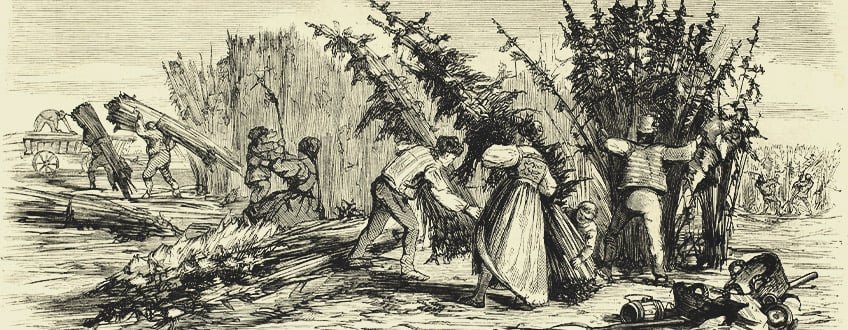
Ottoman Empire
The conquering Ottoman empire waged a war against Egyptian hash in 1877. The government in Constantinople—the city captured after defeating the Byzantine empire—ordered their forces to destroy all of the hash in Egypt.
Morocco
Even the home of the best hash in the world saw some form of prohibition. During 1890, Sultan Hassan I placed severe restrictions over the cultivation of the plant, allowing only certain tribes the right to grow.
Greece
Despite the important historical role the plant played in their ancient history, the Greek government banned the cultivation, importation, and use of cannabis in 1890.
20th-century
Although only a blip in the relationship between humans and cannabis, prohibition swept across many nations during the 20th-century. Many of these laws still linger in some form today. These are only some of the countries that banned cannabis during this time period:
| Jamaica (1913) | Sierra Leone (1920) |
| Mexico (1920) | South Africa (1922) |
| Canada (1923) | Panama (1923) |
| Sudan (1924) | Lebanon (1926) |
| Australia (1926) | Indonesia (1927) |
| United Kingdom (1928) | United States (1937) |
| The Netherlands (1953) | New Zealand (1965) |
| Bangladesh (1989) | Poland (1997) |
| Jamaica (1913) | Sierra Leone (1920) | Mexico (1920) | South Africa (1922) |
| Canada (1923) | Panama (1923) | Sudan (1924) | Lebanon (1926) |
| Australia (1926) | Indonesia (1927) | United Kingdom (1928) | United States (1937) |
| The Netherlands (1953) | New Zealand (1965) | Bangladesh (1989) | Poland (1997) |
21st-century
Things suddenly switched during the 21st-century. As science started to dislodge the propaganda that led to much of the prohibition during the previous century, many nations back-stepped and started to make cannabis more accessible to their citizens. Countries that either legalised medical or recreational cannabis or decriminalised the herb, include:
| Luxembourg | Canada |
| Portugal | Belgium |
| Chile | Brazil |
| Austria | Mexico |
| Argentina | Denmark |
| Switzerland | Italy |
| Germany | Greece |
| Some US states |
| Luxembourg | Canada | Portugal | Belgium |
| Chile | Brazil | Austria | Mexico |
| Argentina | Denmark | Switzerland | Italy |
| Germany | Greece | Some US states |
Science Meets Cannabis
Interestingly, most of the pioneering science that laid the groundwork for our understanding of the plant took place during the intense prohibition of the 20th-century. Although the ancients knew of the medicinal properties of the whole herb, western scientists managed to isolate the active components. They also started to study how cannabis worked in the human body and quickly discovered how molecules like THC interface the endocannabinoid system.
Below, you'll discover some of the key events that led to our current understanding of cannabis and how it produces its fascinating effects:
| Early 1930s: | A Cambridge group led by Thomas Easterfield isolated the first cannabinoid in the form of CBN, a product of THC degradation. |
| 1940: | United States chemist Roger Adams first isolated CBD. |
| 1964: | Raphael Mechoulam and colleagues first isolated the psychoactive cannabinoid THC. |
| 1973: | Researchers confirmed the mind-altering effects of THC during animal experiments and human trials. |
| Early 1990s: | Researchers first discovered and cloned the receptors[14] that make up the endocannabinoid system. They discovered the CB1 receptor in 1990, and the CB2 receptor in 1993. |
| 1992: | Scientists discovered the first endocannabinoid known to science[15]: Anandamide. |
| 1995: | Mechoulam and colleagues identified a second endocannabinoid[16]: 2-AG. |
| Early 1930s: | A Cambridge group led by Thomas Easterfield isolated the first cannabinoid in the form of CBN, a product of THC degradation. |
| 1940: | United States chemist Roger Adams first isolated CBD. |
| 1964: | Raphael Mechoulam and colleagues first isolated the psychoactive cannabinoid THC. |
| 1973: | Researchers confirmed the mind-altering effects of THC during animal experiments and human trials. |
| Early 1990s: | Researchers first discovered and cloned the receptors[14] that make up the endocannabinoid system. They discovered the CB1 receptor in 1990, and the CB2 receptor in 1993. |
| 1992: | Scientists discovered the first endocannabinoid known to science[15]: Anandamide. |
| 1995: | Mechoulam and colleagues identified a second endocannabinoid[16]: 2-AG. |
The Modern Era
Today, cannabis is still recovering from the draconian treatment it received during the 20th-century. However, as our scientific understanding of the plant continues to grow, more and more nations are legalising the herb.
Cannabis scientists are constantly discovering new medical applications for the plant. Researchers are probing over 100 cannabinoids and 200 terpenes that exist within cannabis flowers. Most of these phytochemicals possess benefits in isolation, and also appear to work in a synergistic effect[17] when administered together.
Many innovative minds are also continuing the work of our ancient ancestors. They're exploring the industrial uses of hemp from a building material[18] and fuel[19], to a means of cleaning up polluted environments[20].
Origins Of The Name
The plant’s name cannabis originates from the Greek word κάνναβις (kánnabis), which was originally a Scythian word, and the word Hemp may also be a variant of a word from the same Scythian source. Later, Scythian expressions cannabis and hemp spread throughout the Indo-European languages. In 1548 Oxford English Dictionary recorded the first use of the expression Cannabis sativa.
The name marijuana or marihuana for Cannabis sativa has more of a folk etymology. The use of the word marijuana originated in Mexico among Mexican Spanish natives, and it’s associated with a female name Maria Juana, but we are yet to discover the story that reveals the connection between the two. The word was excessively used back in the 1930s by the press to give cannabis an alternative foreign-sounding name, making it seem more dangerous and, in that way, disaffecting the American people from it. Another theory is that the word marijuana comes from the Chinese word for hemp “ma”. It is thought Chinese explorers called the flower of cannabis “ma ren hua,” meaning hemp seed flower. This may have been picked up on by Spanish natives in the Americas, giving another potential source of the name.
Cannabis owns a rich and complex history. Hopefully, modern man will continue to lead cannabis away from prohibition and towards freedom. Generations from now, civilisations will hopefully read about the 21st-century, and how the people of that time embraced cannabis to create good in the world.
- UNODC - Bulletin on Narcotics - 1950 Issue 4 - 002 https://www.unodc.org
- Cannabis utilization and diffusion patterns in prehistoric Europe: a critical analysis of archaeological evidence https://www.researchgate.net
- Cannabis in Chinese Medicine: Are Some Traditional Indications Referenced in Ancient Literature Related to Cannabinoids? https://www.ncbi.nlm.nih.gov
- Shuowen jiezi 說文解字 (www.chinaknowledge.de) http://www.chinaknowledge.de
- Cannabis in Chinese Medicine: Are Some Traditional Indications Referenced in Ancient Literature Related to Cannabinoids? https://www.ncbi.nlm.nih.gov
- Japanese History: Hemp in Prehistoric Times | Herb Museum http://www.herbmuseum.ca
- Hempen Culture In Japan http://www.japanhemp.org
- Japanese History: Hemp in Prehistoric Times | Herb Museum http://www.herbmuseum.ca
- Cannabis | Green Shinto http://www.greenshinto.com
- Ancient Scythians spread the use of cannabis in death rituals https://www.digitaljournal.com
- Luigi Arata, Nepenthes and cannabis in ancient Greece - PhilPapers https://philpapers.org
- Cannabis in Ancient Greece - theDelphiGuide.com https://thedelphiguide.com
- BBC News | PANORAMA | History of Cannabis http://news.bbc.co.uk
- Cannabinoid pharmacology: the first 66 years https://bpspubs.onlinelibrary.wiley.com
- Isolation and structure of a brain constituent that binds to the cannabinoid receptor | Science https://science.sciencemag.org
- Identification of an endogenous 2-monoglyceride, present in canine gut, that binds to cannabinoid receptors - ScienceDirect https://www.sciencedirect.com
- Taming THC: potential cannabis synergy and phytocannabinoid-terpenoid entourage effects https://www.ncbi.nlm.nih.gov
- Hempcrete: Alberta company uses hemp to build tiny homes https://www.cbc.ca
- Industrial Hemp's Energy Potential - Biofuels - Hemp Gazette https://hempgazette.com
- Industrial Hemp for Bioremediation | Florida Hemp Coalition https://floridahempcoalition.org


























